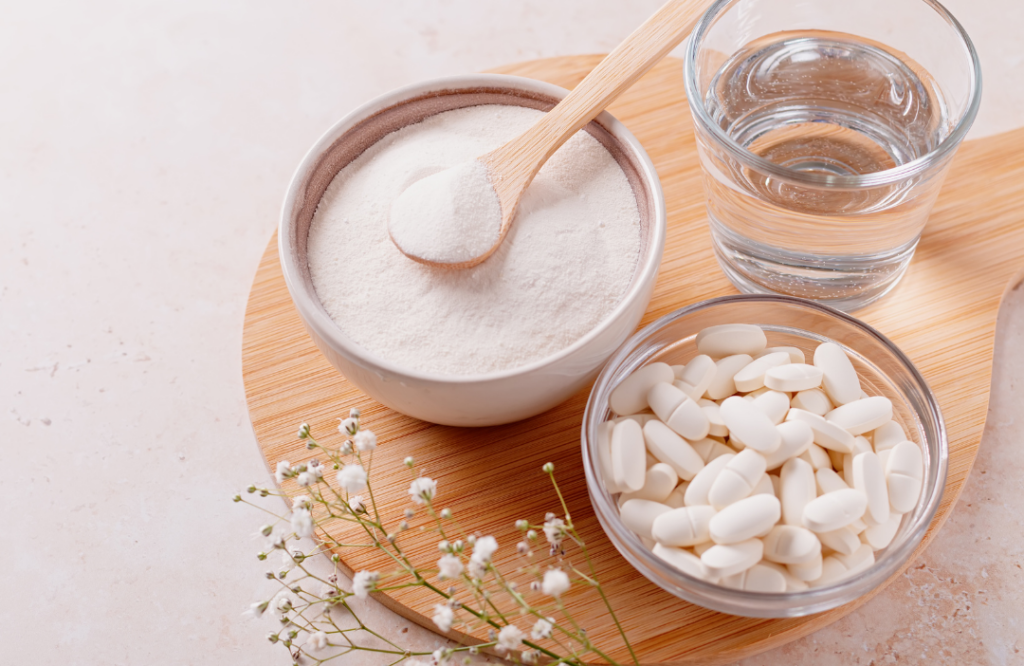Feeling Stuck? How To Get Your Boogie Back
Published on January 21, 2016 by Dr. Caitlin Gordon
Feeling stuck is the pits. I started out January with all the good intentions and motivation in the world. I wrote out my goals for the year, I downloaded a habit tracking app, and I was ready to make changes. Then suddenly my motivation seemed to disappear and I felt weighed down. I knew what I wanted, I knew the steps to take, but when it came to taking action I felt like I was wading through wet concrete. So, I got frustrated and self-critical. I started feeling bad about my lack of progress. I felt overwhelmed and discouraged. This quickly turned to feeling irritable outwardly as well.
In Traditional Chinese Medicine, feeling stuck has a name. We call it “Qi stagnation”. In my case, liver qi stagnation specifically. If you’re curious, you can read more about signs of Liver Imbalances. Qi pronounced “chee”, is just another word for energy. Qi stagnation is like an energetic traffic jam.
I proceeded to spend the weekend skiing, laughing with good friends, having some drinks and dancing my butt off. I woke up Monday with a solid hangover (not recommended), but a totally fresh perspective. Something shifted, something moved, and I felt a sense of flow. I wasn’t feeling stuck anymore! My boogie was back. The last couple days there has been an ease that was not present the previous two weeks. Laughter and physical activity all MOVE qi. It turns out that engaging in some of these activities was what I needed to get unstuck.
Red Flags for Stuckness
Sometimes feeling stuck means there isn’t space for what needs to move through to move. Creating space for our feelings is a transformative process. Most of us spend an incredible amount of time and energy consciously and unconsciously trying to avoid uncomfortable feelings. This is natural! We don’t want to suffer. But it isn’t the best way.
Common ways we dodge our feelings:

Watching TV
Constantly spending time around other people
Eating
Drinking alcohol
Smoking marijuana
Other drugs/mind-altering substances
Sleeping
Cleaning
Buying stuff/Shopping
Sex
Social Media
There’s nothing inherently wrong with any of these activities. The problem lies in using these activities as a way to numb or escape from our true emotional state. When we disconnect from painful feelings, they don’t go away. In fact, they tend to dig themselves in deeper. Every emotion has a physical location in the body. Whether you are aware of it or not, each feeling you have shows up somewhere internally: maybe you feel fear in the pit of your stomach, sadness as a tightening in your chest, anger as a constriction in your throat. Emotions manifest physically. When we don’t allow ourselves to really sit with a feeling, that energy becomes stuck, and voila: Qi Stagnation.
Just as emotional energy can cause physical qi stagnation, physical qi stagnation can cause emotional stuckness. A sedentary lifestyle often leads to symptoms of Qi stagnation and can cause you to feel emotionally unwell.
Symptoms of Qi Stagnation
- Feeling stuck
- Fixed sharp pain
- Sensation of phlegm or something stuck in the throat
- Tightness anywhere in the body
- Inability to move forward with tasks/ideas/projects
- Lack of motivation
- Depression
- Irritability
- Fixed throbbing headaches
- Chest tension
- Cold hands and feet
- Feeling off-balance
- Constipation
- Picking at cuticles/skin, nail biting
- Teeth grinding/clenching, jaw tension
- Frequent sighing or yawning
Some of these symptoms might seem like harmless nuisances, but over time qi stagnation leads to blood stagnation (impaired circulation), which is at the root of many chronic disease processes. When blood and fluid stop moving properly, toxins accumulate, and a congealing process occurs. This leads to cysts, tumors, plaque, kidney stones/gallstones, bone spurs, calcification, adhesions, growths, etc. and you’re often stuck (no pun intended) looking at surgical interventions.
The Solution
How do we get our boogie back? Fortunately, there are a lot of tools to help move qi, both on a physical and emotional level. It’s best to approach it from both directions as mind and body are inseparable, but sometimes a physical approach creates needed space for emotions, and an emotional approach relieves physical symptoms of qi stagnation. When you’re feeling stuck, I recommend:
Moving Qi Emotionally
 Sit with it (mountaintop not required). Whatever uncomfortable, unpleasant, or downright painful feeling(s) you have, you have to allow space for them to exist if you want them to pass. The good news is all feelings do pass. All feelings are impermanent (both good and bad). Don’t like how you feel? Rest assured it’s not forever. The fastest way to soften an emotion is to face it, witness its existence.
Sit with it (mountaintop not required). Whatever uncomfortable, unpleasant, or downright painful feeling(s) you have, you have to allow space for them to exist if you want them to pass. The good news is all feelings do pass. All feelings are impermanent (both good and bad). Don’t like how you feel? Rest assured it’s not forever. The fastest way to soften an emotion is to face it, witness its existence.
Try the following exercise:
Take a few deep breaths. Check in with how your body feels. Is there tension or holding somewhere? When you direct some focus to that area, does an emotion arise? Maybe you’re already pretty clear on what the feeling is. Tap into it for a minute.
- Name it, own it, and say it aloud or to yourself: “I feel really anxious.”
- Accept it, without judgment. Feelings need not be good or bad, they just are: “It’s okay that I feel anxious.”
- Acknowledge the impermanence of the feeling: “This feeling of anxiety will pass.”
The feeling may not pass at that exact moment, but you’ve created space for it to be processed and released. By witnessing the emotion, without getting sucked into the story about it, you let it flow through. This isn’t purely woo-woo advice, there’s neuroscience to back it up. You’ve just freed up a TON of qi/energy that was previously being spent avoiding feeling something. This is so good for your health.
Laughing, crying, yelling, yogic breathing, acupuncture, and creative processes all move qi too.
Moving Qi Physically
 Sometimes you have this vague sense that something is off, but you don’t know what. Or maybe you’ve developed pain somewhere but don’t remember injuring yourself. Pain is often a telltale sign that something is stuck.
Sometimes you have this vague sense that something is off, but you don’t know what. Or maybe you’ve developed pain somewhere but don’t remember injuring yourself. Pain is often a telltale sign that something is stuck.
Any physical activity moves qi, the more vigorous, the more qi it moves. Bouncing, jumping, and generally higher impact activities tend to be especially effective. Ever have a stiff low back first thing in the morning that loosens up as soon as you get moving? Depending on where you have pain, something like warm yoga or swimming might be the best option. Check with your acupuncturist before starting a new activity if you’re in pain. Acupuncture and herbs can also move qi. Read more about How Acupuncture Moves Energy.
Other ways include chanting, singing, orgasms, listening to moving music, spicy food, alcohol consumption (in moderation, this is not a long-term solution), and deep breathing techniques. Think about each of these activities and how both emotions and/or physical functions start moving (sinus drainage with spicy food, for example). You’ve got this! Go get your boogie back.
The contents of this site, including text, graphics, images, and other material are for informational purposes only. Nothing contained in this site is or should be considered or used as a substitute for professional medical or mental health advice, diagnosis, or treatment. Please schedule an appointment for personalized health advice.







